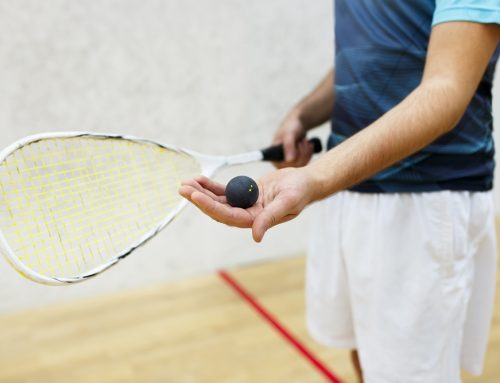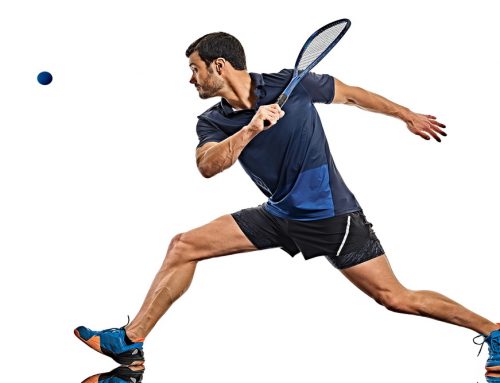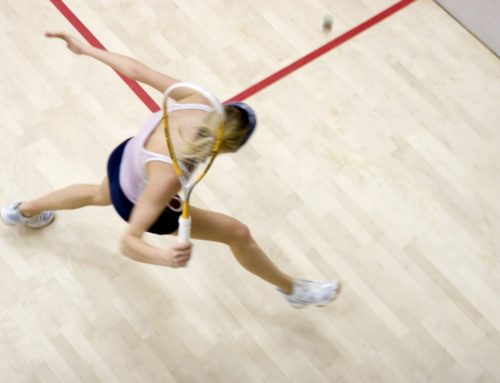If someone was thinking of taking up squash the number one tip I would give that person is learn how to grip the racket correctly from day one and make it habitual!
Following on from my previous article ‘choosing the right equipment’ including selecting the right racket, now you need to learn how to use it. Holding the racket correctly will allow you to play a range of shots from a range of positions, holding the racket incorrectly will set you on a pathway that will be full of limitations and dead ends along your journey.
Anyone who has had coaching from me may have heard me use the analogy of teaching squash like a book. A book with dozens of chapters progressing from beginner to advanced throughout. Chapter 1 in this said book would be all about the grip, the correct way to hold the racket, how to do it and why.
To understand and appreciate the significance of having the correct grip you have to think a bit deeper about the game of squash and all its demands. Many club players I come across are trying to perfect advanced aspects of the game that would be most likely popping up in chapters 7, 8, 9 etc in the ‘book of squash’, however, often many players find these chapters difficult sometimes even impossible because of their grip.
For example taking the pace off delicate short shorts, lifting the ball high onto the front wall when under extreme pressure, clawing a ball back straight after it has gone past you, hitting tight from tight, recovering the ball out of the back corners after your opponent has played a good length, these difficult skills all come several chapters into the ‘book of squash’ as your play develops and are hugely important for progression. Unfortunately to execute these above skills and many more demands the correct grip. My point being if you skipped chapter 1 you could be in trouble when you reach these chapters and you either won’t have these skills in your locker or when you attempt them you struggle with the execution. Either way you are a lesser player than you could or should be and sadly will stay as such unless of course you relearn chapter 1.
So what is the correct grip? There are a couple of key aspects, firstly have an appreciation that in squash the majority of the shots require you to slice or cut the ball creating backspin. The way the grip sits in your hand dictates the angle of the racket head face, this results in the face being laid open or closed. Open will assist you in creating great backspin, closed will not which is a common problem at club level!
It is now time to go and get your racket (probably for the first time in a while for most of you!). Hold the shaft of the racket with your non playing hand and have the edge of the racket facing you at this point you should not be able to see your strings. Now hold your rackets handle in your squash hand like you are shaking hands with someone whilst still holding the shaft with your non playing hand (see figures 1 & 2).


Loosen your squash hand slightly and use your non squash hand to slowly roll the shaft between thumb and fingers forwards and backwards, observe what is happening to your grip and your racket face. Roll approximately 45 degrees one way to create an open racket face for a forehand, 45 degrees the other way for an open backhand. Gripping the racket this way creates open racket faces for both the forehand and backhand shots as shown in figures 3 and 4.


Careful not to open it to far (60, 70 plus degrees), as some do in the early stages of changing the grip and opening up the face, as this will result in miss hits, over cutting/slicing and even ceiling shots.
Another common grip issue I have come across over the years are the ‘thumbers’. These are players who use their thumb to hit their backhands rather than technique. This can come from a previous life as a badminton player or just simply a short cut in the early days of taking up squash and struggling on the backhand side. The ‘thumber’ will be great at flicks but rarely have power, therefore a good short game but no length game to speak of. The ‘thumber’ will also probably have wrist or elbow pain at some point, magnified when playing regularly. Another identifying trait of the ‘thumber’ is when trying to hit with power, the racket’s handle often slips round in the hand causing a miss hit. When coaching the younger juniors we teach them to ‘close the gate’, this means resting the thumb on the second finger as opposed to leaving a gigantic gap (see Figure 5 & 6).


My last tip regarding the grip is to ‘try using more of it’. A standard handle on a squash racket is approximately 7 inches. I hold the racket handle with an inch in excess at the top and at the bottom, however if you were to see my once yellow Karakal grip you would notice that wear and tear and discolouring does occur in these excess areas too. Again I refer back to thinking a bit deeper about the demands of the game. Often if a ball is far away and you need that extra inch at the bottom of the handle to reach the ball. This could be trying to reach across the court to cut out your opponents attempted length shot with a volley, lunging forwards to the front of the court to reach your opponents delicate trickle boast or drop shot or reaching back for a ball that has been driven past you and appears to be fading out and dying before reaching the back wall. In all of these cases and many more, I will instinctively extend my grip to its full capacity to assist me.
There are also times when you need to shorten the racket by moving your hand up the grip, consider the back corners. When trying to hit a ball out of the back corners your swing is often impeded by both the back wall and the side wall. In such cases try to shorten your swing and make it more compact. Moving the hand up the handle immediately assists with this, it also makes the racket feel lighter allowing us to use a ‘flick of the wrist’ to strike the ball, if our normal size swing is not possible.
Armed with this knowledge regarding the grip can you now apply it? Be warned it is very easy to default back to old ways especially during match play as we become so focused on winning we lose focus on developing. So once squash life returns to normal we have to create these new grip habits. A habit is a repeated action ingrained into our subconscious achieved through hours and hours of purposeful practice. Are you willing to create new good habits or stick with the old bad ones?
Look out for Article 3 coming soon all about the swing!





